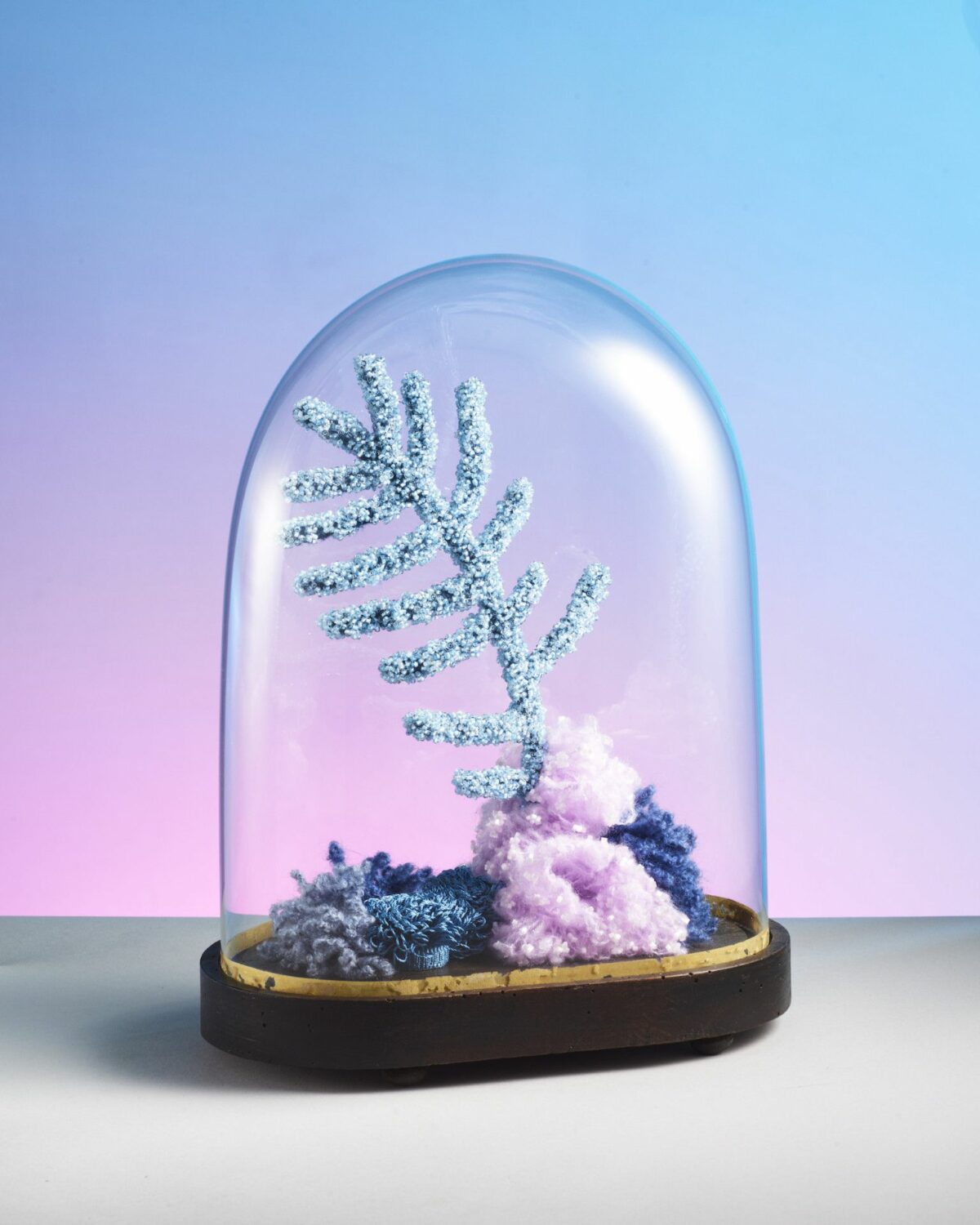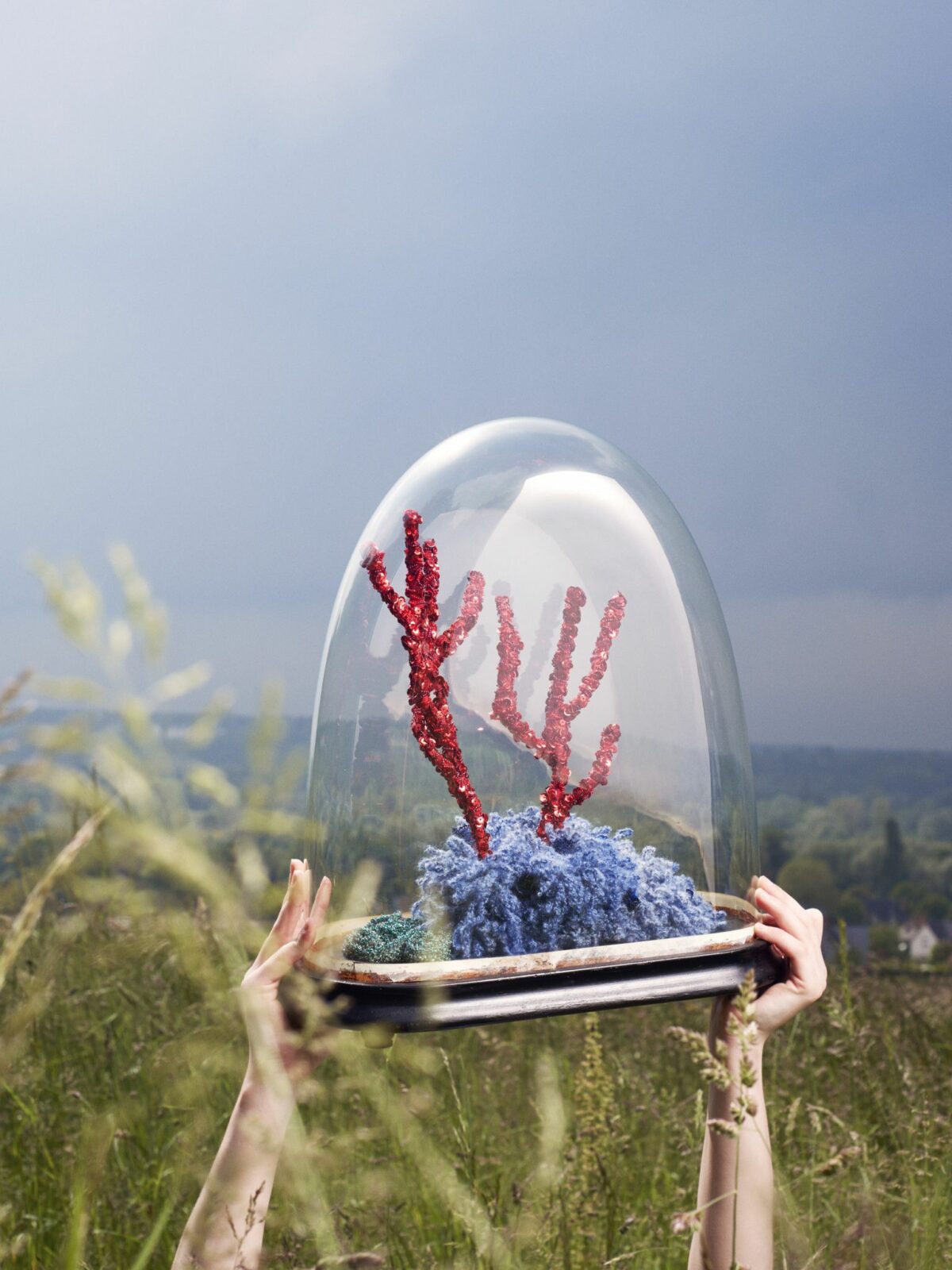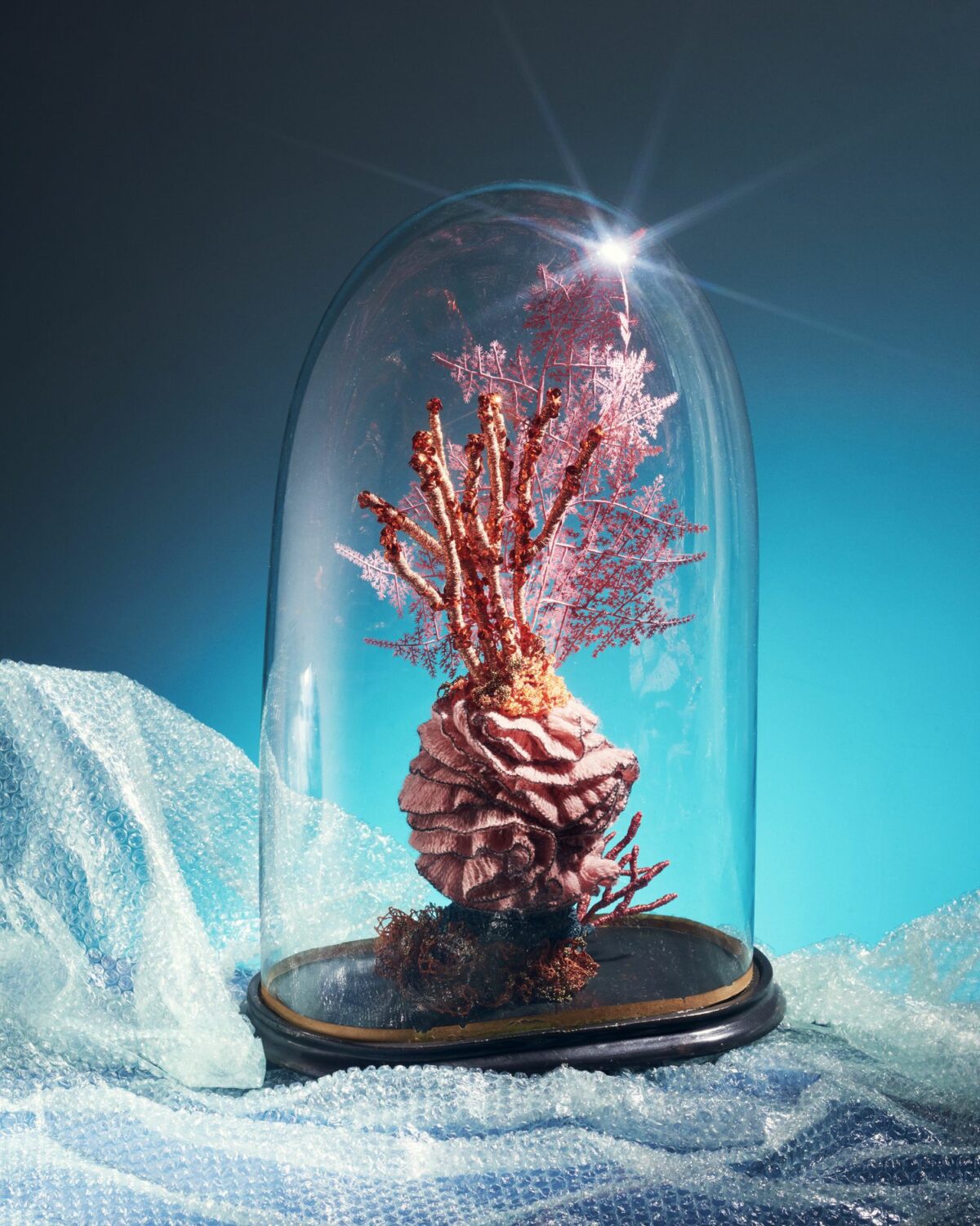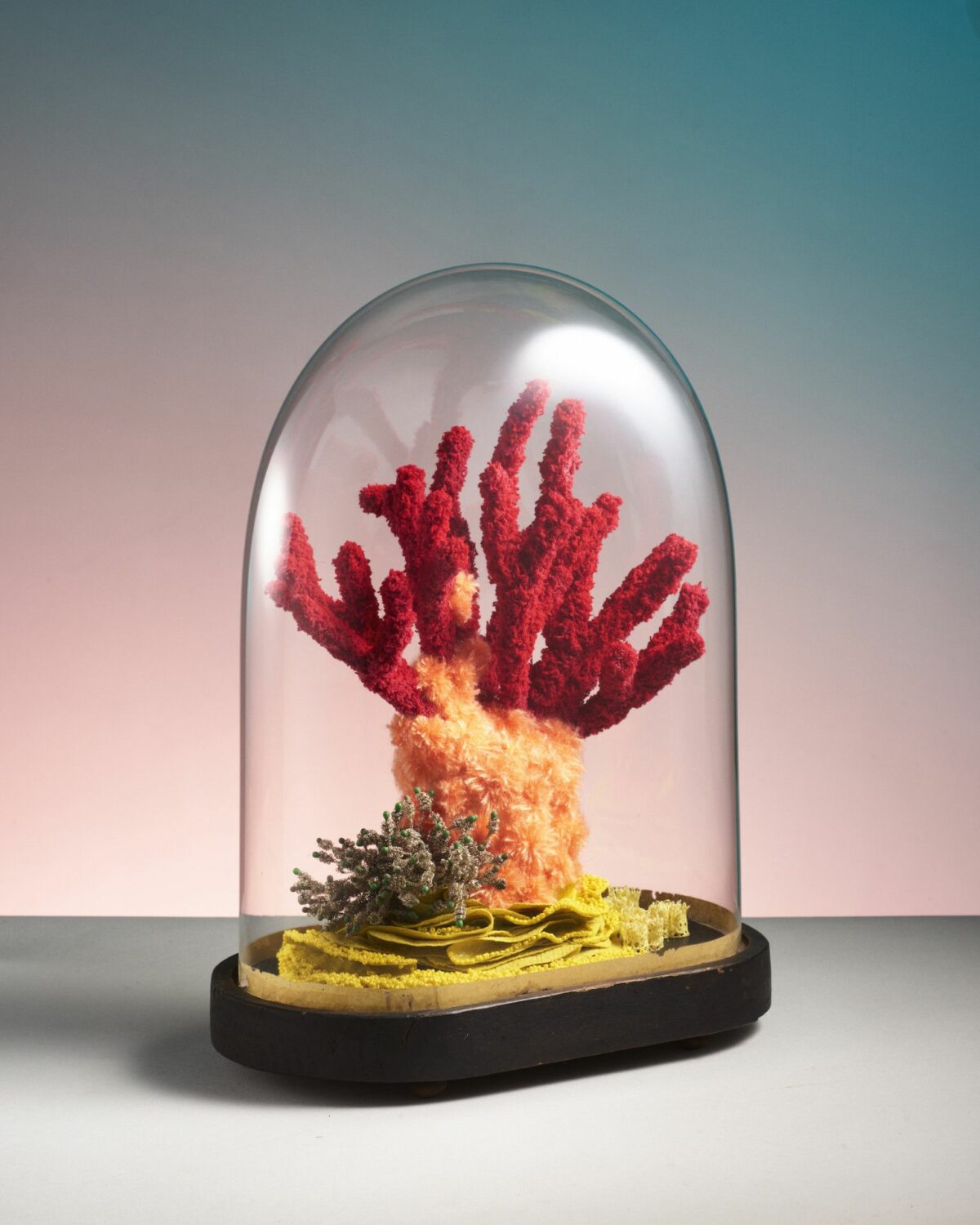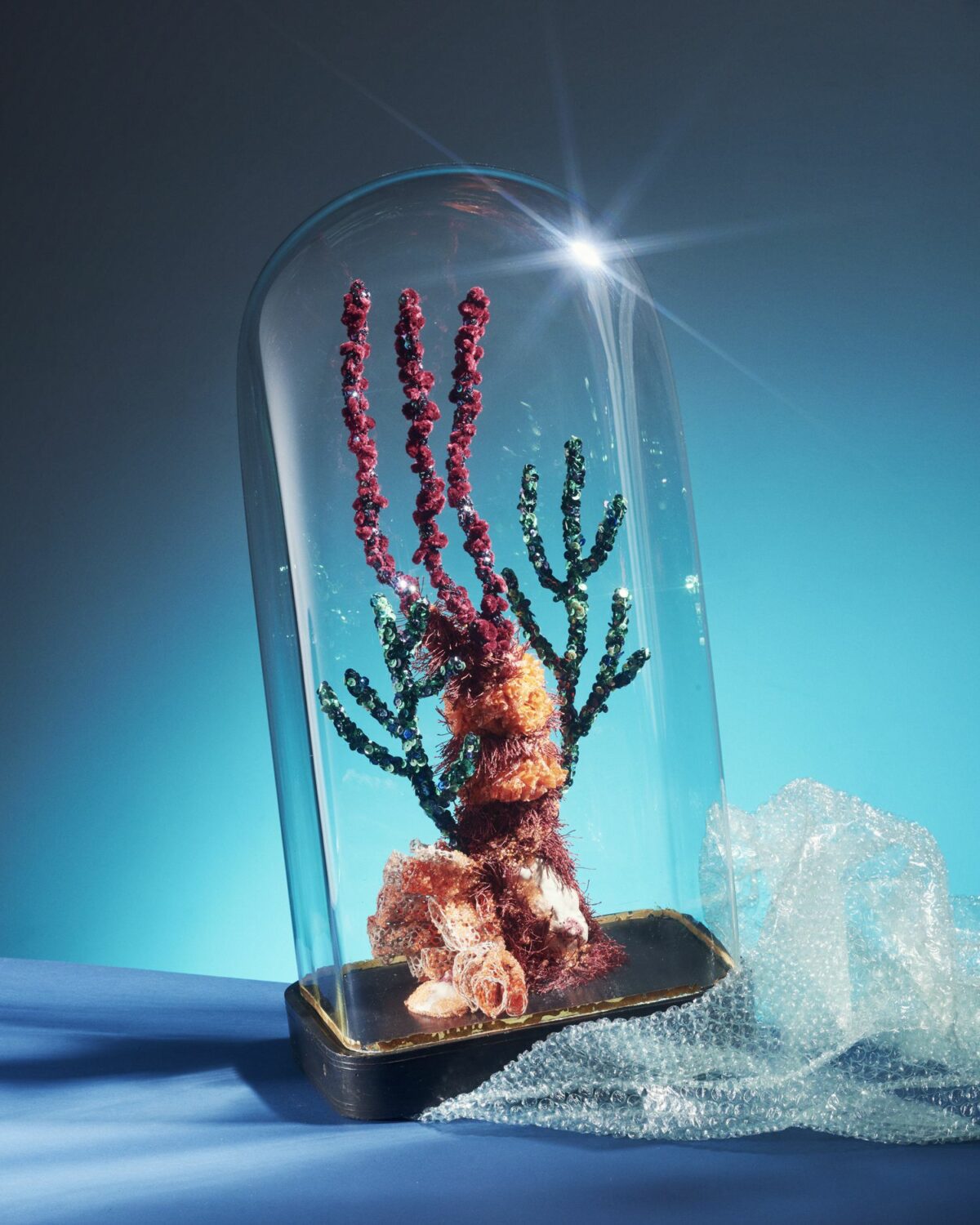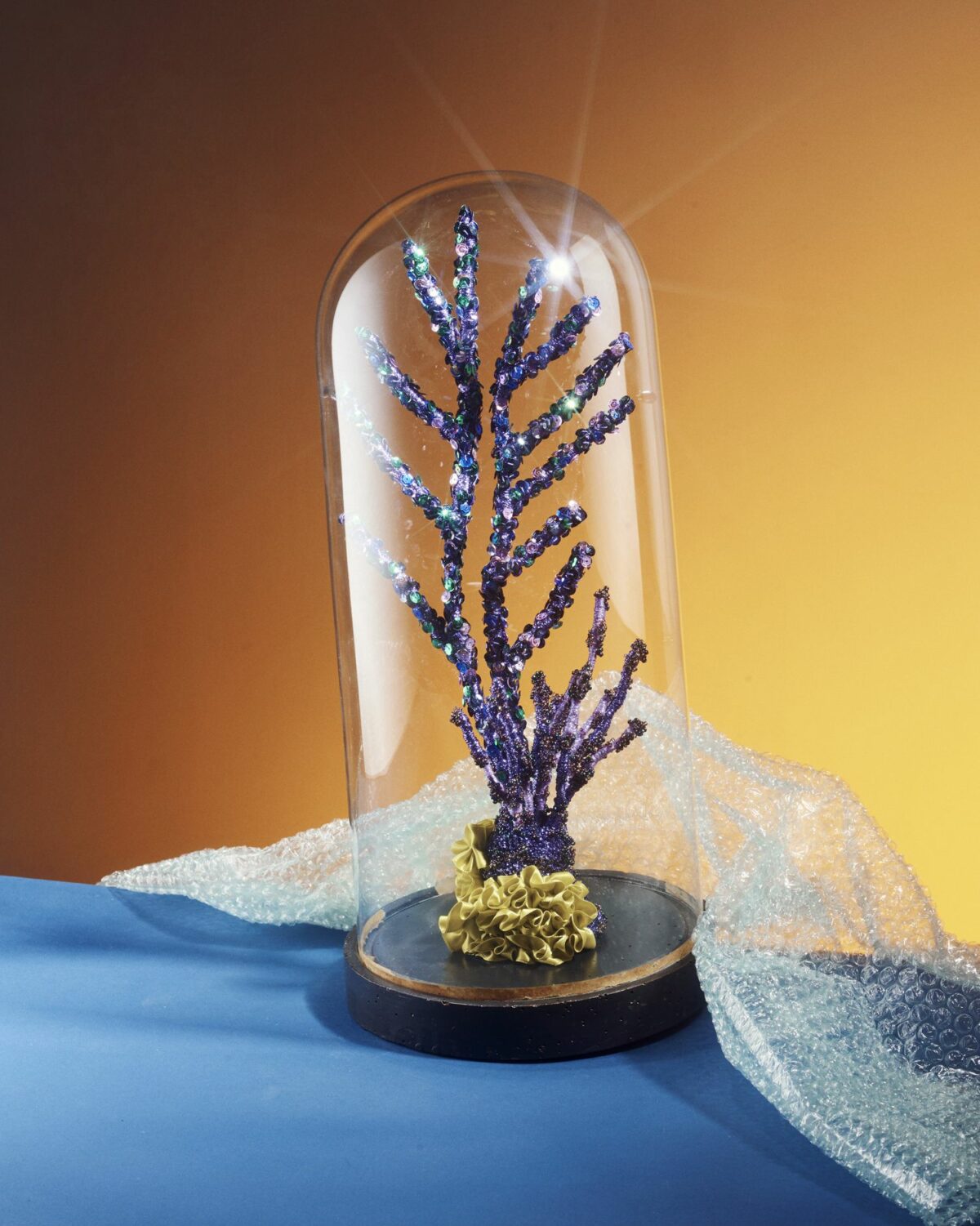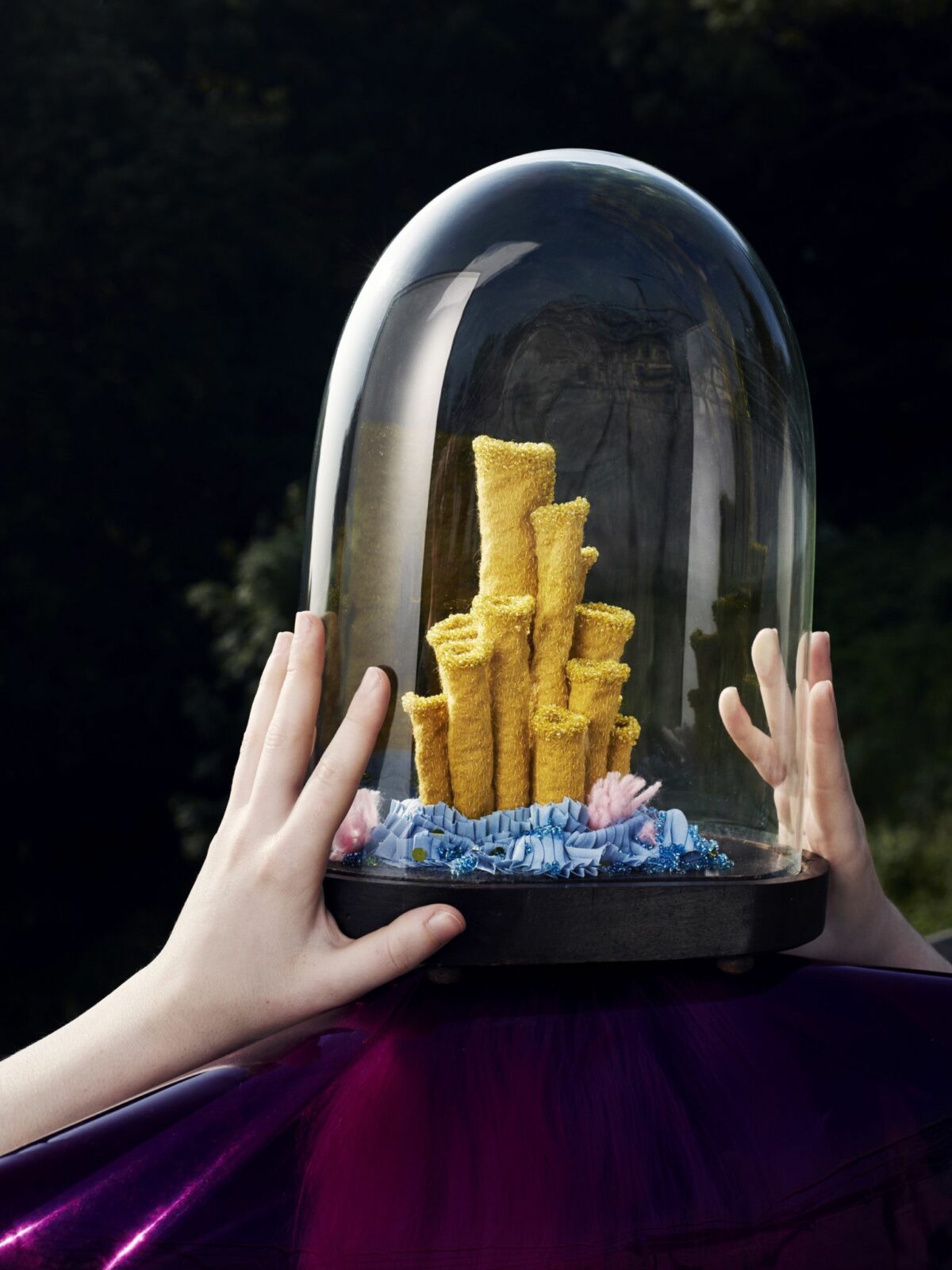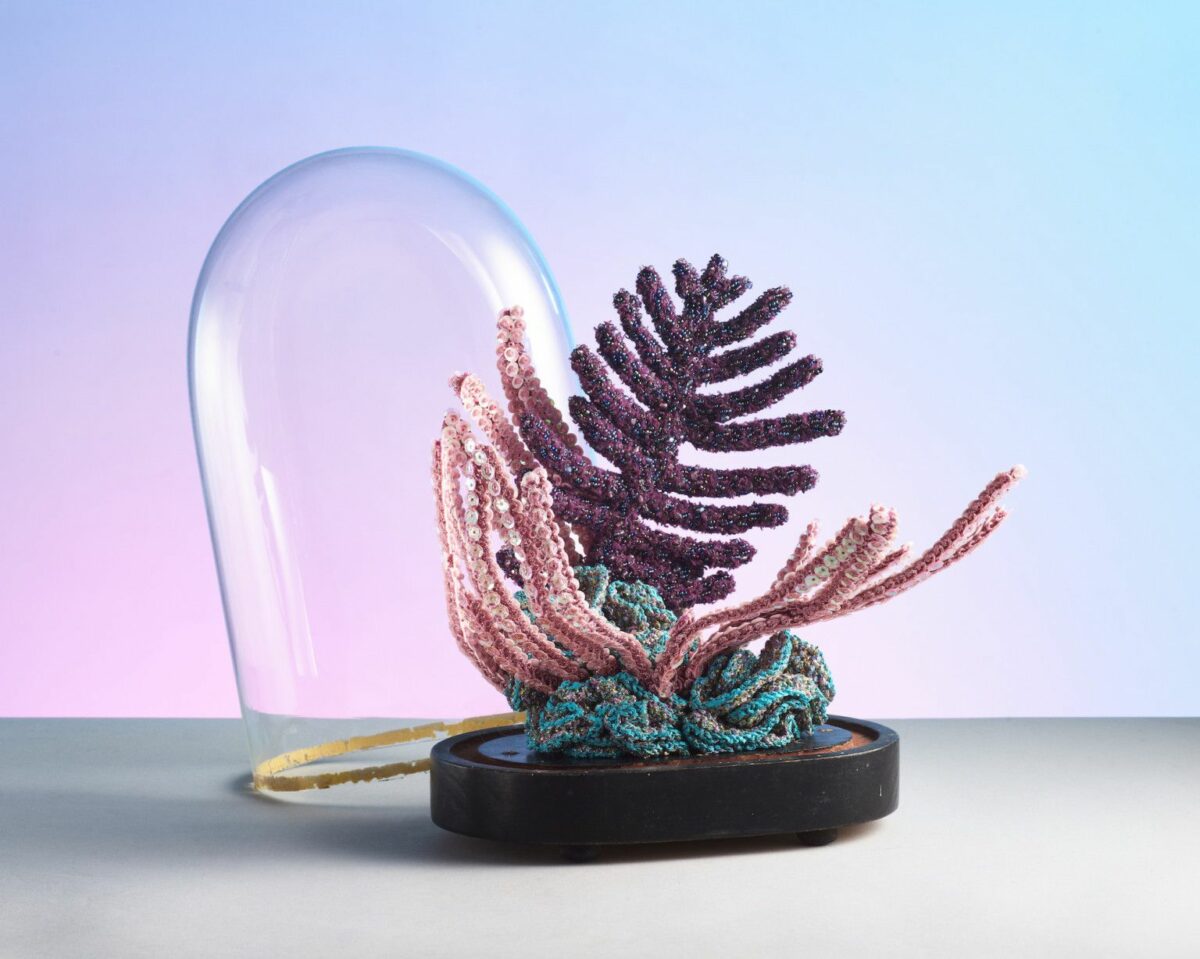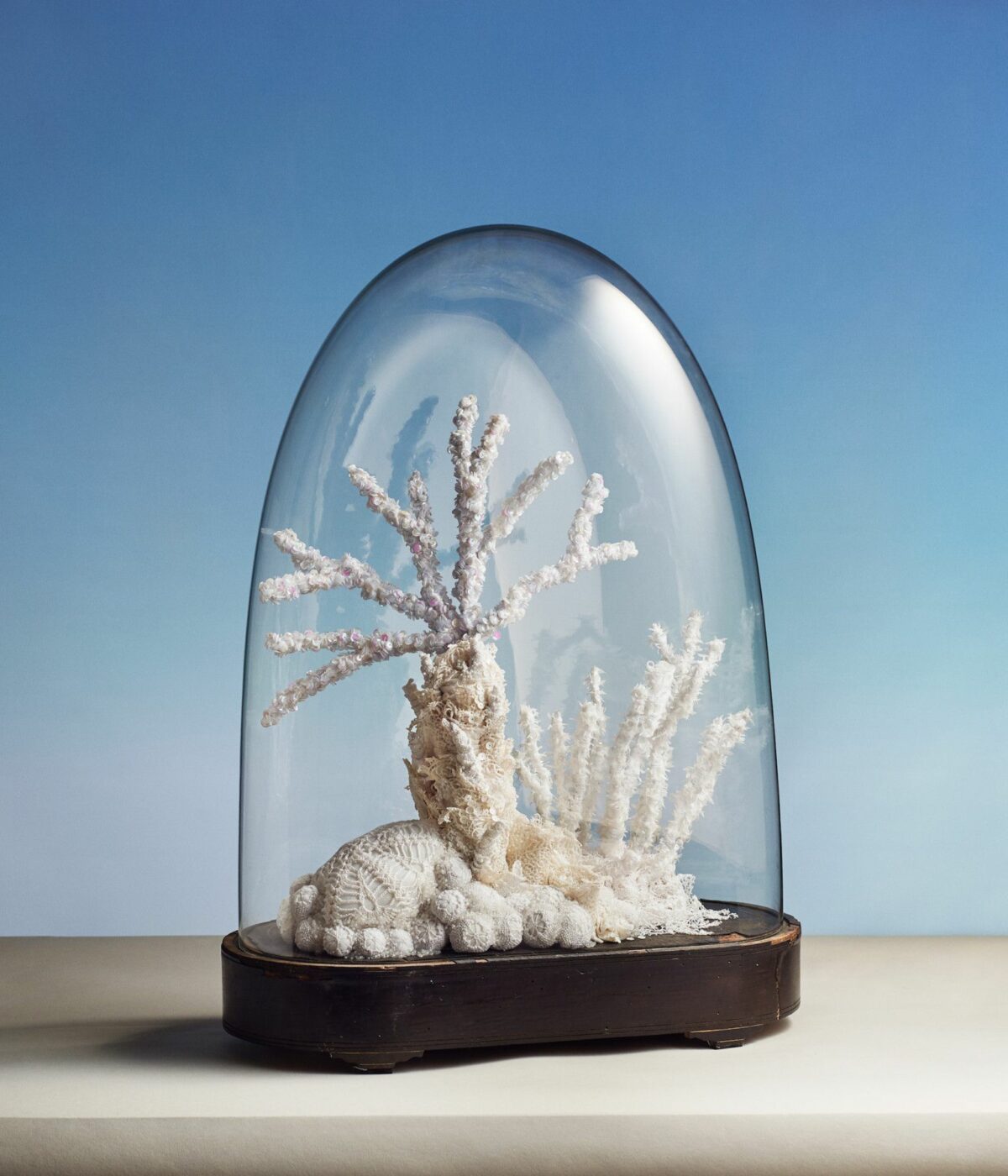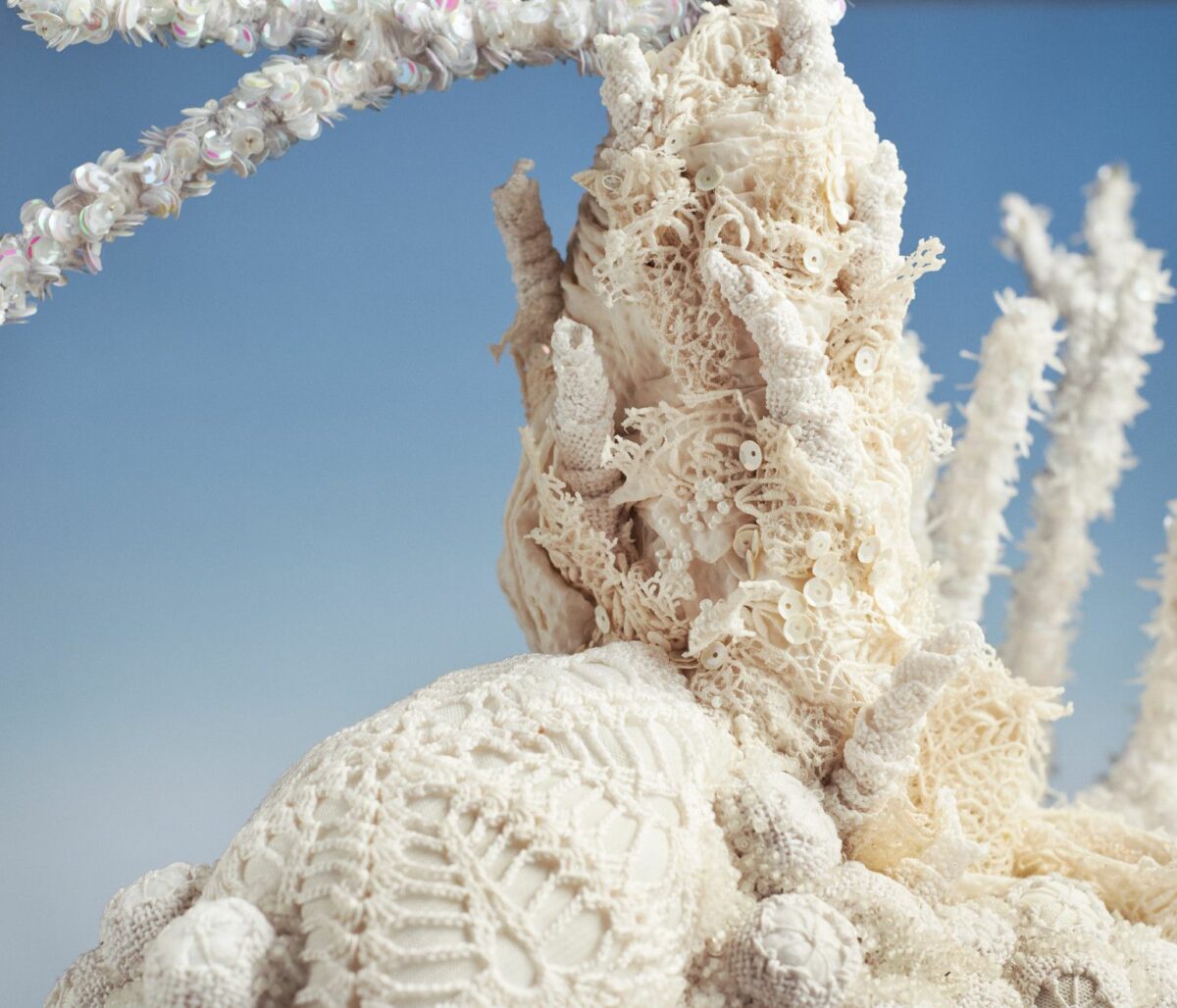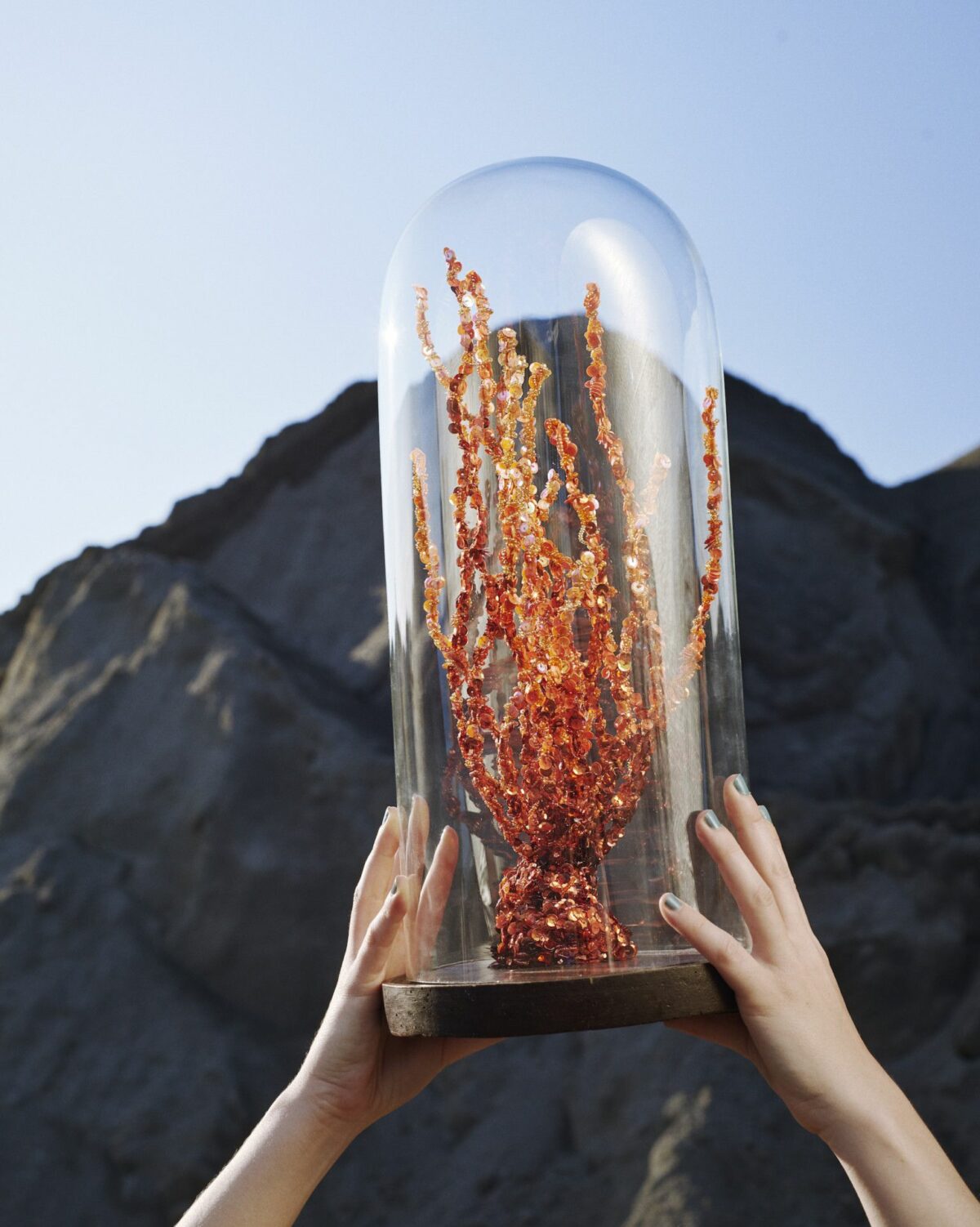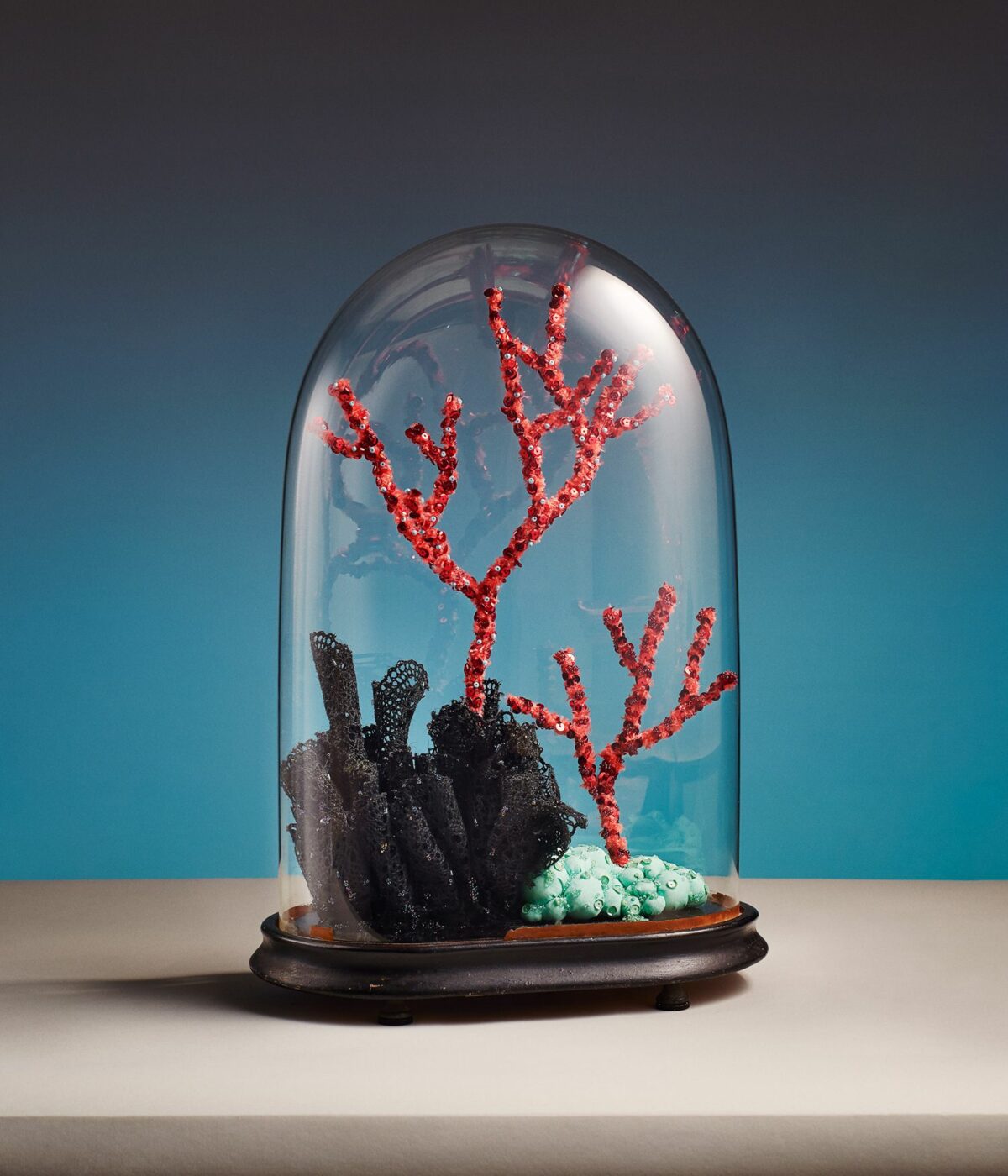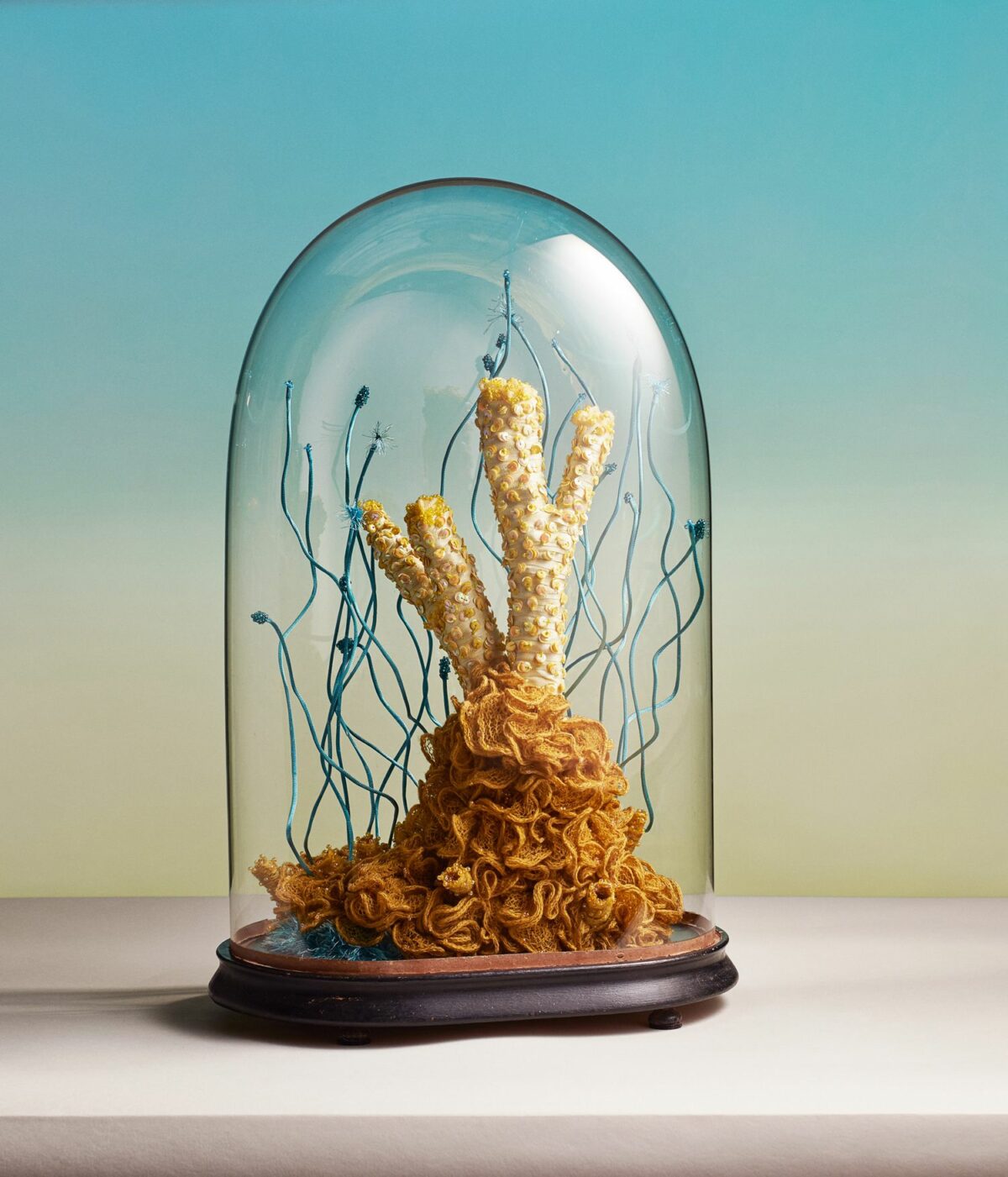Aude Bourgine’s “Lungs of the Ocean” series is a mesmerizing tribute to the breathtaking beauty and fragile existence of coral reefs. Through her intricate embroidered coral sculptures, Bourgine captures the astonishing diversity found within these vibrant marine ecosystems. Each piece is meticulously handcrafted, embodying the patience and precision akin to fine jewelry making. By preserving her creations under glass domes, Bourgine crafts a poignant narrative, echoing the specimens displayed in Natural History museums. These glass-enclosed sculptures not only encapsulate the visual splendor of the coral species they represent but also serve as reminders of the urgent need to protect our oceans. The glass domes act as both shield and showcase, emphasizing both the beauty and vulnerability of these vital oceanic communities.
In her work, Bourgine underscores the delicate balance of nature and the alarming threats that coral reefs face today, combining art with advocacy. The delicate embroidered designs, each named after their respective species in Latin, are designed to inspire awe and provoke thought. As symbols of the life-filled ecosystems they mirror, these sculptures also stand as stark reminders of the endangered state of these underwater worlds. By placing her art within glass globes, Bourgine adds a layer of timelessness, preserving these once-vibrant sea gardens in a form of eternal beauty against the backdrop of accelerating climate change. In doing so, she not only captures the artistic imagination but also deepens public understanding of marine conservation issues, urging us to reflect on their roles in nurturing the Earth’s ecological health.
These sculptures are the result of painstakingly minute and lengthy work, close to jewelry, and represent the wide diversity of these animals, each bearing the latin name of the species as its title. Under glass globes, frozen in time, similarly to specimens kept in Natural History museums or Curiosity Cabinets, they are precious witnesses to the frailty of nature and endangered ecosystems around us.
Aude Bourgine
More info: Website, Instagram.
